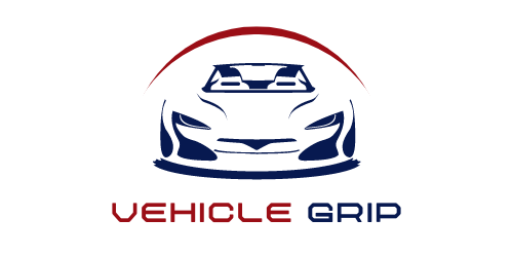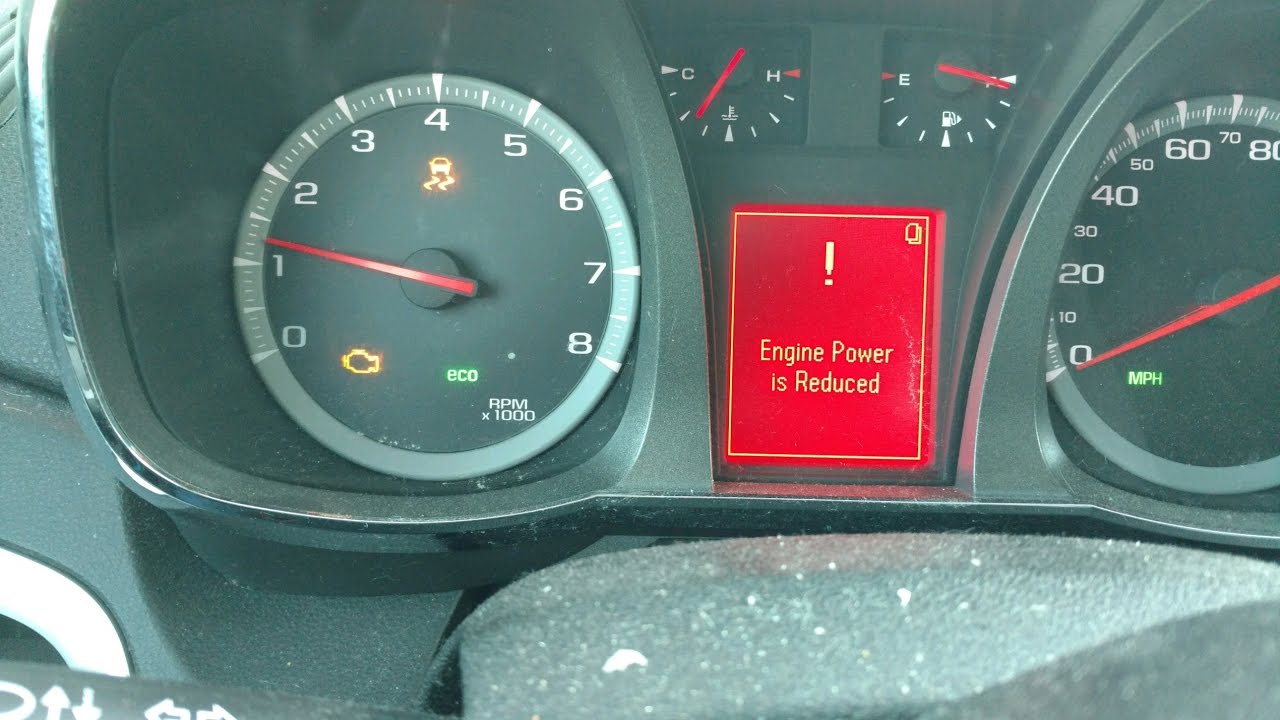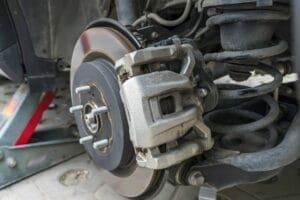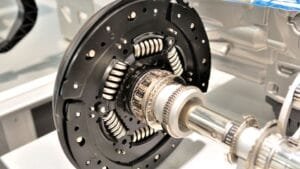Experiencing engine power reduction in your Chevy Equinox can be a stressful and confusing ordeal. This issue often arises unexpectedly, causing the vehicle to lose power and significantly affecting its performance.
Whether you’re driving on the highway or just cruising through town, a sudden decrease in engine power can be alarming and dangerous. Understanding the underlying causes and knowing how to address them is essential for maintaining your vehicle’s performance and safety.
This guide aims to provide you with a comprehensive understanding of why your Chevy Equinox might experience reduced engine power and what steps you can take to resolve the issue.
We will delve into the potential causes, the implications of each, and practical solutions to help you get back on the road with confidence.
Understanding Engine Power Reduction
What Does “Engine Power Reduced” Mean?
When your Chevy Equinox displays a “Engine Power Reduced” message, it indicates that the vehicle’s computer system has detected a problem. This issue can lead to the car entering a sort of “limp mode,” where the engine power is intentionally reduced to prevent further damage. This is a protective measure designed to safeguard the engine and other critical components.
Common Causes
1. Throttle Body Issues
The throttle body controls the amount of air entering the engine. If it becomes dirty or faulty, it can cause reduced engine power. Symptoms of a malfunctioning throttle body include rough idling, stalling, and poor acceleration.
2. Faulty Sensors
The Chevy Equinox relies on various sensors to monitor and manage engine performance. Key sensors include the oxygen sensor, mass airflow sensor, and throttle position sensor. A fault in any of these can lead to reduced engine power.
3. Electrical Problems
Issues with the vehicle’s electrical system, such as a failing battery or alternator, can affect engine performance. Electrical problems can cause erratic signals or insufficient power to critical components.
4. Transmission Issues
Problems with the transmission can also lead to reduced engine power. This includes low transmission fluid, worn-out gears, or a malfunctioning transmission control module.
5. Exhaust System Blockages
A clogged catalytic converter or exhaust system can restrict the flow of exhaust gases, leading to reduced engine power. This can also result in poor fuel efficiency and increased emissions.
6. Fuel System Problems
The fuel system must deliver the right amount of fuel to the engine. Issues such as a clogged fuel filter, failing fuel pump, or dirty fuel injectors can disrupt this process and cause engine power reduction.
Diagnosing the Problem
1. Check Engine Light
When the “Engine Power Reduced” message appears, it’s often accompanied by the check engine light. Use an OBD-II scanner to read the error codes from the vehicle’s computer. These codes can provide clues about the underlying issue.
2. Visual Inspection
Perform a visual inspection under the hood. Look for any obvious signs of damage or wear, such as frayed wires, loose connections, or leaks.
3. Listen for Unusual Noises
Unusual noises from the engine or exhaust system can indicate specific issues. For example, a hissing sound might point to a vacuum leak, while a rattling noise could suggest a problem with the catalytic converter.
Solutions and Repairs
1. Cleaning the Throttle Body
If the throttle body is dirty, cleaning it can often resolve the issue. This involves removing the throttle body and using a specialized cleaner to remove carbon buildup.
2. Replacing Faulty Sensors
Faulty sensors should be replaced with OEM (Original Equipment Manufacturer) parts to ensure compatibility and performance. This may include the oxygen sensor, mass airflow sensor, or throttle position sensor.
3. Addressing Electrical Problems
If the issue is related to the electrical system, check the battery and alternator. Ensure all connections are secure and that the battery is fully charged. Replace any faulty components as needed.
4. Transmission Maintenance
For transmission-related issues, check the fluid level and quality. If the fluid is low or dirty, perform a transmission fluid change. For more severe problems, a professional inspection may be necessary.
5. Clearing Exhaust Blockages
If the catalytic converter or exhaust system is clogged, it may need to be cleaned or replaced. This should be done by a professional to ensure proper handling and disposal of exhaust components.
6. Fuel System Service
Service the fuel system by replacing the fuel filter, cleaning the fuel injectors, and checking the fuel pump. Ensure the fuel system is delivering the correct pressure and volume of fuel to the engine.
Preventive Maintenance
1. Regular Inspections
Perform regular inspections of your vehicle’s key components. This includes checking the throttle body, sensors, electrical system, transmission, exhaust system, and fuel system.
2. Scheduled Maintenance
Follow the manufacturer’s recommended maintenance schedule. This includes oil changes, air filter replacements, and transmission service. Keeping up with scheduled maintenance can prevent many issues that lead to reduced engine power.
3. Using Quality Fuel
Always use high-quality fuel from reputable sources. Poor quality fuel can contain contaminants that clog the fuel system and harm engine performance.
4. Driving Habits
Adopt good driving habits to reduce stress on your vehicle. Avoid aggressive acceleration and braking, and allow your engine to warm up before driving in cold weather.
When to Seek Professional Help
While some issues can be resolved with DIY methods, others require professional expertise. If you’re unable to diagnose or fix the problem yourself, it’s best to seek help from a certified mechanic. They have the tools and knowledge to accurately diagnose and repair complex issues.
1. Persistent Problems
If the “Engine Power Reduced” message persists after attempting repairs, it’s time to consult a professional. There may be underlying issues that are not immediately apparent.
2. Complex Repairs
For complex repairs, such as transmission overhauls or major engine work, professional assistance is essential. Attempting these repairs without the proper knowledge and tools can cause further damage.
3. Warranty Considerations
If your Chevy Equinox is still under warranty, attempting DIY repairs could void the warranty. Check your warranty terms and consult with a dealership or authorized service center.
Conclusion
Experiencing reduced engine power in your Chevy Equinox can be a daunting experience, but understanding the potential causes and solutions can help you address the issue effectively.
Regular maintenance, timely inspections, and adopting good driving habits are key to preventing engine power reduction. If you encounter persistent or complex issues, seeking professional help ensures your vehicle remains safe and reliable.
With the right knowledge and approach, you can maintain your Chevy Equinox’s performance and enjoy a smoother driving experience.




